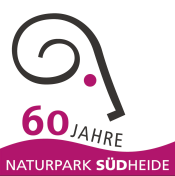Extensive forests
The scenery of the Südheide nature park is today predominantly characterized by large contiguous forests forming part of one of the largest forest areas in Lower Saxony. The forests in the Südheide nature park are mainly coniferous forests consisting of pines and spruces which came into being due to afforestation. In particular, their size, the fact that they are not dissected by roads and their low building density result in a remarkable silence, loneliness, beauty and wonderfully clean, spicy air.
In the Südheide nature park a hurricane occurred in 1972 and a large forest fire in 1975, destroying part of the forest, which was then reforested. As a result, a large part of the forests in the park is of low age and has a uniform structure and a high proportion of conifers (pines). However, the former royal forests such as the Lüßwald in the northeast of the park still have near-nature populations of deciduous trees stemming from old beeches and oaks.
Whether the fresh green of the spring leaves or the colourful autumn foliage – the Lüßwald provides a unique atmosphere for long walks or lonely horseback rides at all times of the year.
Our idyllic moors

The sources of the heath streams are often found in idyllic moors.
Among others, reeds, sedges, bulrushes, marsh calla and swamp grass grow in the fens fed by groundwater. Fens are located above all in the lowlands and valleys of the heath streams. One of the largest is the Postmoor near Bargfeld.
The upland moors still in existence include the protected Bornrietmoor near Oldendorf, but some small moors near Müden/Örtze or Eversen have also survived.
In the upland moors fed by rainwater, of which there are unfortunately no longer very many in existence, is a population of endangered plants such as peat moss, sundew, bog asphodel, cottongrass, marsh clover and bog rosemary, together with orchids such as the spotted orchid and the lesser butterfly orchid.

Sehnsucht NATUR








